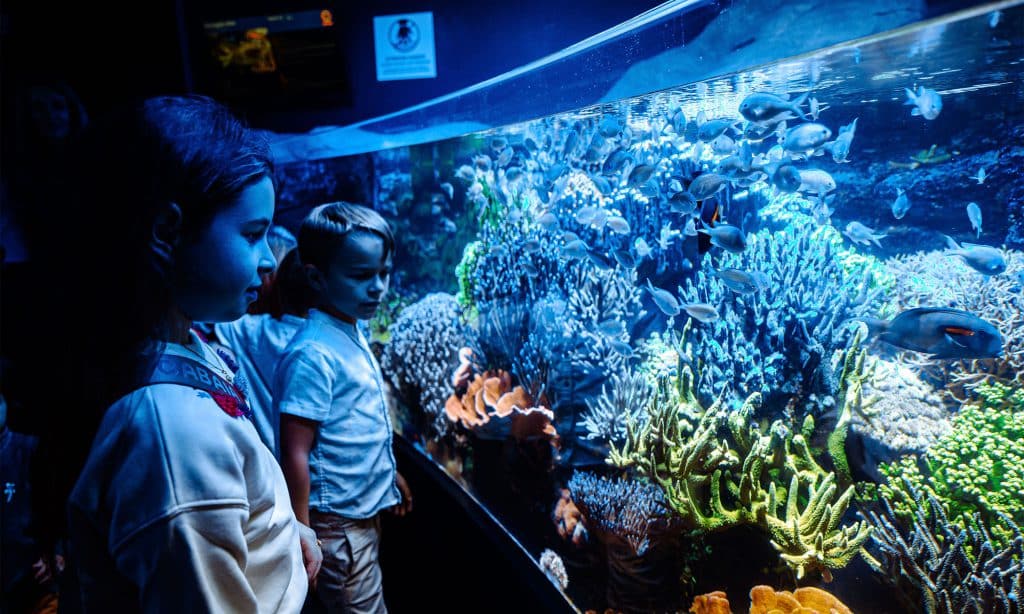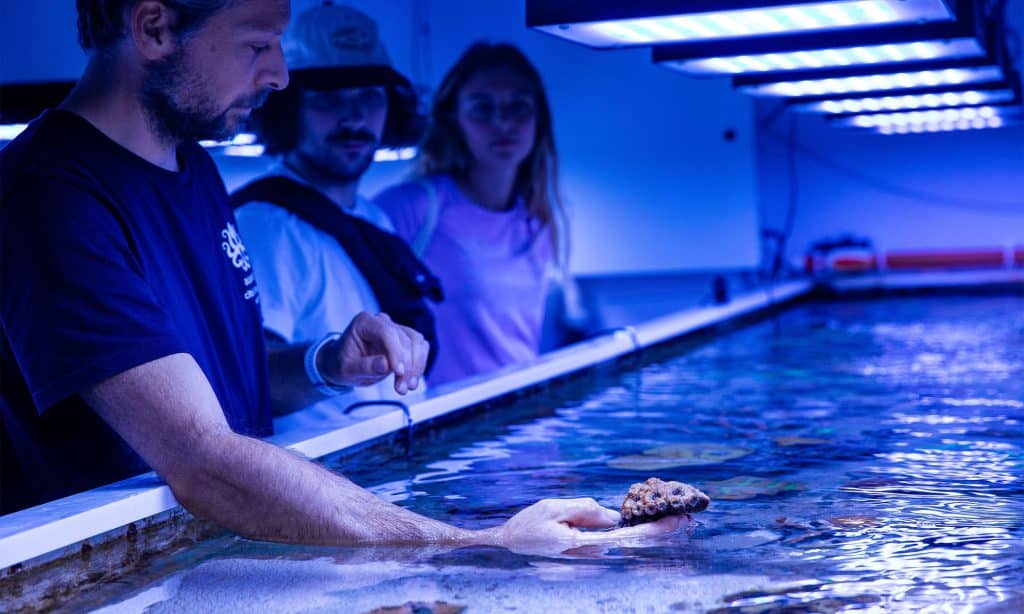Home > Life at the Biarritz Aquarium > Our animals > The corals
The corals of the Aquarium de Biarritz
Contrary to popular belief, these organisms are not plants but animals. They belong to the phylum Cnidaria, just like jellyfish and sea anemones, and like them, corals have stinging tentacles. They are true biodiversity refuges, essential to the balance of the oceans.

Coral in brief
Corals are colonies of many small animals called polyps. Coral reefs cover less than 1% of the ocean but shelter more than 50% of marine biodiversity, true tropical forests of the oceans.
Thanks to the secretion of limestone, corals build huge rocky structures that serve as refuges for many species of fish, crustaceans, and other ocean inhabitants.
Coral reefs are in great danger, and their preservation requires continuous efforts.
Discover coral fragmenting during the behind-the-scenes visit

The Aquarium de Biarritz is actively committed to preserving tropical reefs. Our teams reproduce these fragile organisms in the laboratory using a method called fragmenting.
During the behind-the-scenes visit, discover reproduction techniques and understand conservation challenges.
Book your place now for this immersive experience to be enjoyed with the family (children from 8 years old).
You will be immersed in the fascinating story of corals, sharks, and other ocean inhabitants.
Vital ecosystems to preserve
Coral reefs, true underwater forests, are the main habitats for many marine species. Corals feed fish populations and help maintain ecosystem balance. However, these areas are threatened by climate change effects, especially warming waters and ocean acidification, which can harm the health of coral reefs.
Many data show that sustainable management of these ecosystems, along with their protection in marine protected areas, is essential to ensure the survival of these species and their habitats. Sustainable fishing in these areas and the protection of corals and marine populations are top priorities to secure a viable future for these fragile ecosystems.
The role of coral reefs is also essential for protecting coasts and territories by reducing the impact of waves and storms. The waters of these zones, rich in biodiversity, are a real gold mine for scientists who collect valuable data on marine fauna and ocean health. WWF and other environmental organizations work to preserve these species and protect these threatened marine territories.
Species present at the Aquarium de Biarritz
Frequently asked questions
Are corals alive?
Yes! Corals are marine animals that live in colonies (although some species are solitary). Each polyp builds a small calcareous structure which, over time, forms a reef.
Why do corals bleach?
Can we touch them?
No, these living structures are extremely fragile. Even slight contact can damage their surface and disrupt their growth. Besides being fragile, they are also stinging and can cause burns.